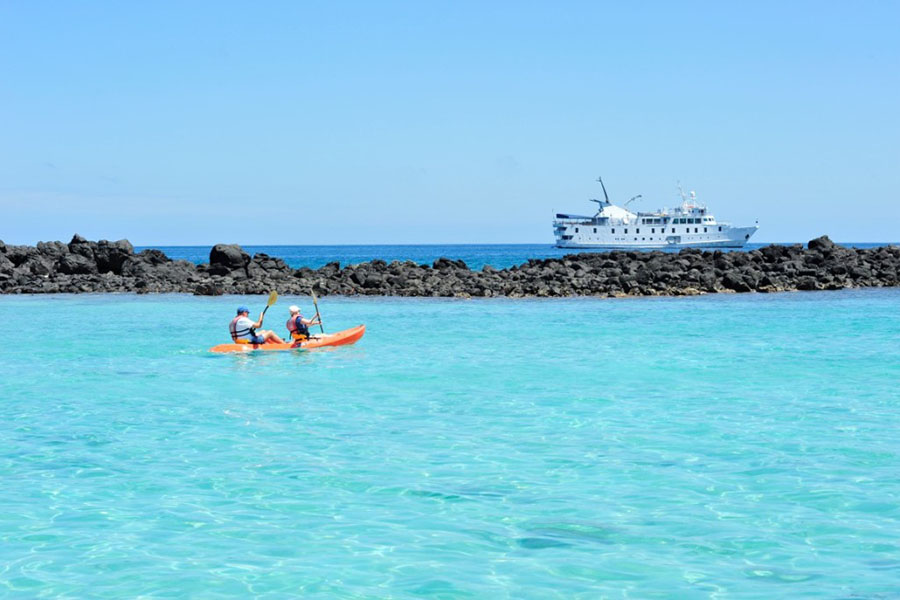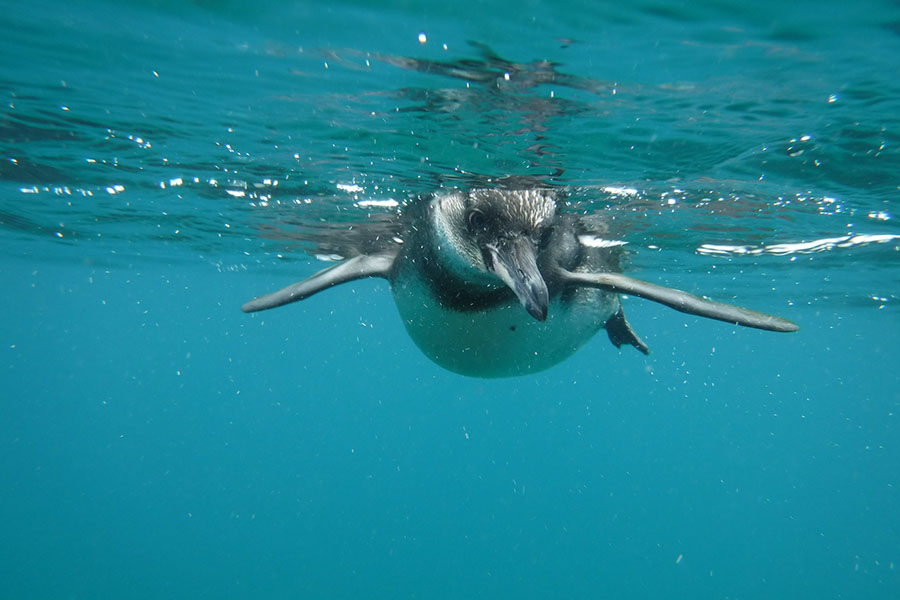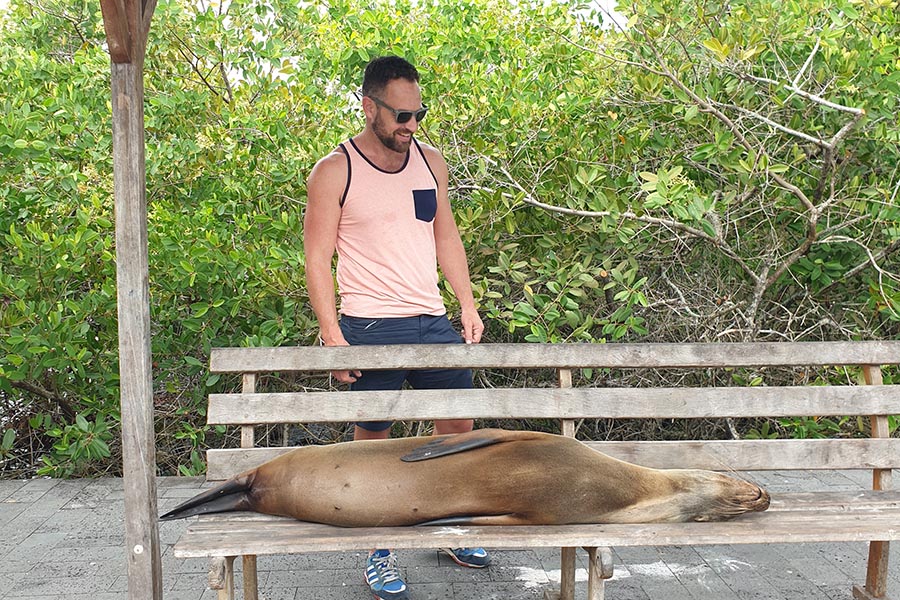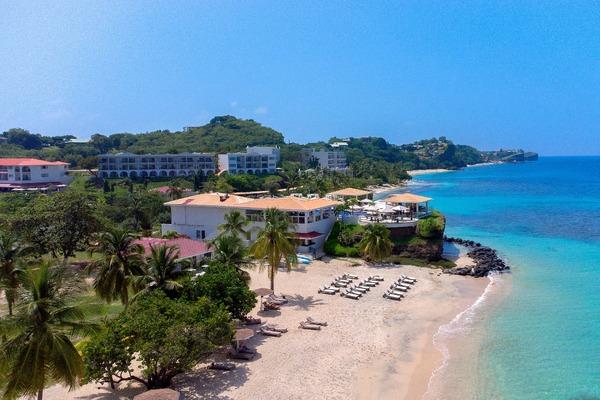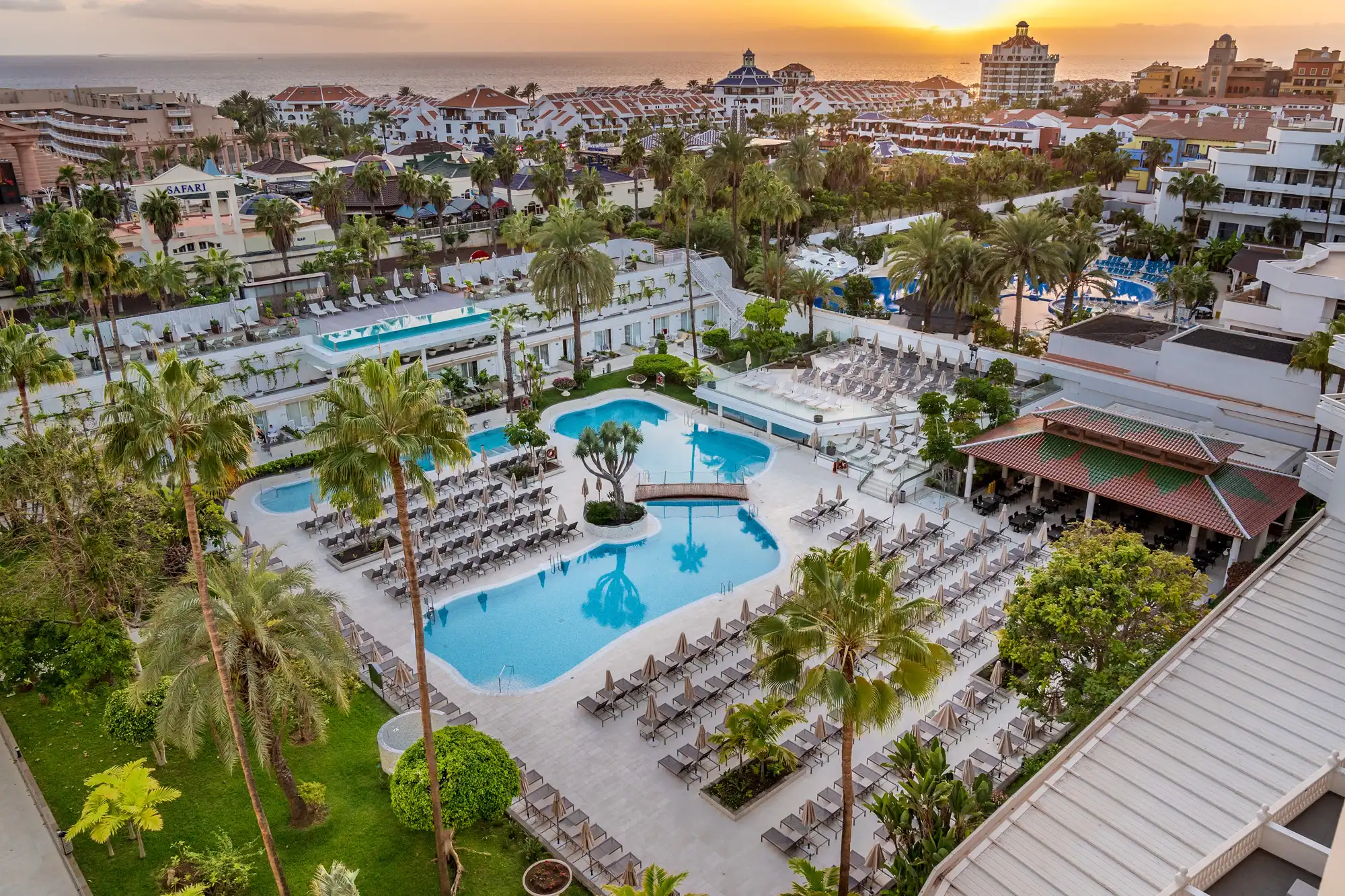Revealed: the optimal size of ship for cruising the Galapagos
National park rules prevent more than 100 visitors a day at key sites, so book your clients onto a larger ship to reduce the chances of their vessel encountering any others at a port of call, says our writer, fresh from a visit to the remote islands with Metropolitan Touring

Among the expectations for my first trip to the Galapagos – volcanic scenery, tropical sunshine and epic wildlife encounters – something I had not foreseen was the prospect of falling in love. Yet here I am, dressed unflatteringly in wetsuit, snorkel, fins and mask, and I’ve just given my heart away in a moment of love at first sight. Not that the object of my affections seems remotely interested. He (or she, I’m not able to tell) simply carries on swimming, furiously paddling in front of me with fleshy pink feet.
He (or she) is a Galapagos penguin, and I’ve just splashed into its watery domain as several of the birds are gathering breakfast. With surprising speed and agility, they perform nimble twists, turns and pirouettes in hot pursuit of tiny, silvery fish. Between bursts of activity, they pop back to the surface; catching their breath before diving for their next fishy snack. And here I am, snorkelling among them as if I’ve suddenly become Sir David Attenborough.
It’s the promise of animal encounters like this that puts the Galapagos on many clients’ bucket-lists. Located 600 miles from the South American continent, these isolated islands are famously home to unusual creatures that endearingly show no fear of humans. Even so, the guides leading this morning’s excursion very clearly instruct us not to approach the wildlife.
The thing is, nobody seems to have told the penguins. One of them swims straight up to me and pecks its reflection in my mask before diving away, leaving a trail of bubbles in its wake. I take that as my cue to return to the beach and join the iguanas lazily stretched on the sand, soaking up the tropical warmth.
WHY BIGGER IS BETTER
I’m here exploring these fabled isles aboard 48-passenger yacht La Pinta on an expedition cruise operated by Metropolitan Touring. Cruising (whether on a luxury ship or simple liveaboard sailboat) is by far the best way to engage with the archipelago and its wildlife. Clients could visit independently – staying in Puerto Ayora, the main town, and taking day-trips to nearby islands – but by visiting spots that are well beyond the range of any tour boat, a multi-day cruise provides a rewardingly immersive experience.
I’d always thought that a small boat would be optimal for sailing these isles, but it turns out a mid-sized or larger ship is the best way to go. Under Galapagos National Park’s management, cruise ship schedules ensure that visitor numbers at key sites do not exceed 100 guests per day. Vessels are thus constrained in size by this maximum capacity; and while this means that larger ships nearly always enjoy ports of call on their own, clients travelling on smaller boats may find themselves anchored beside several others.
Sharing somewhere so out of the way with a flotilla would, for me, detract from the magic of exploration, so I’m grateful that my voyage on mid-sized La Pinta only encounters another ship once. As part of Metropolitan Touring’s three-strong fleet (alongside sister ships, 90-passenger Santa Cruz II and 40-passenger Isabella II), La Pinta is spacious and comfortable, with a strong Ecuadorian slant in its restaurant. The fleet also employs some of the best guides in the business who, as well as hosting kayak and snorkel trips, scenic boat rides and nature walks, know exactly where and when to seek each island’s wildlife stars.
THE REALLY WILD SHOW
Such local insight translates into extraordinary encounters. Beyond knowing that breakfast time is when penguins are most active, the guides on my four-night Northern Galapagos itinerary help us find all the region’s key species. We see blue-footed boobies pair-bonding by waving their webbed, turquoise toes at each other; we watch baby sea lions learning to swim in a tidal pool; and we spot short-eared owls hunting seabirds at dusk.
Some creatures are only found on particular islands, so it’s crucial to match clients with their ideal itinerary. If they are desperate to see red-footed boobies, for example, their sailing should visit Genovesa, while flightless cormorants are found only on Isabela and Fernandina. Seasonality plays a part too: there may be sunshine and calm seas year-round, but seeing colourful seabird colonies or sea lion pups on the beach requires travelling in certain months, according to animals’ lifecycles.
Conveniently, Metropolitan Touring’s ships span the full 19-strong archipelago, with a flexible mix of shorter and longer sailings that can be combined should clients wish to maximise their tally of animal icons.
Of course, the icons most people want to meet are giant tortoises, and the best island for that is Santa Cruz. As well as Puerto Ayora’s must-visit tortoise sanctuary El Chato, a trip to Rancho el Manzanillo is essential. Here, we walk around open woodland inhabited by scores of the giant reptiles.
One is especially huge: probably over a century old and weighing more than 300kg (47st), estimates our guide. We observe him grazing a spiny bush as if it were a salad bar, then watch him wade into a muddy pool for a leisurely wallow. When several others join him, they look like a set of stepping stones. It’s a sight I’ll always remember: that and those pirouetting penguins, who will forever have a piece of my heart.
Book it: Windows on the Wild can package flights, transfers, an overnight in Guayaquil, a four-night cruise on La Pinta (full-board) and three nights’ B&B at Finch Bay, from £6,925pp. windowsonthewild.com
Galapagos spotlight
Smarter: Fire up clients’ imaginations by introducing them to the Galapagos Big 15: the archipelago’s most amazing, must-see animals. metropolitan-touring.com/galapagos/big15
Better: Encourage clients to top or tail their cruise with a beach break at luxurious Finch Bay. It’s a two-minute boat ride from Puerto Ayora and a mile-long walk through cactus forest to wild Tortuga Bay. Double rooms from $682 (£560) per night, B&B. finchbayhotel.com
Fairer: Metropolitan Touring’s entire operation is carbon neutral thanks to an offsetting project that aims to protect 14,000 hectares of tropical rainforest. Clients can visit this on a twin-centre via Quito, staying in the jungle at Mashpi Lodge. mashpilodge.com
